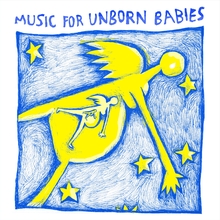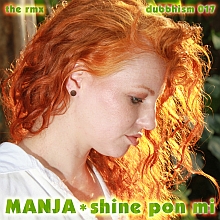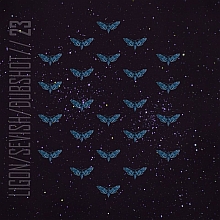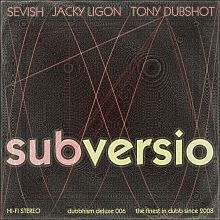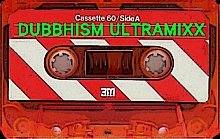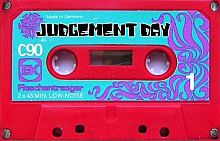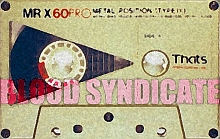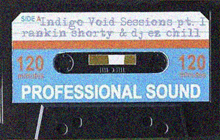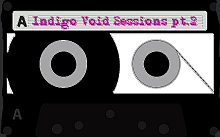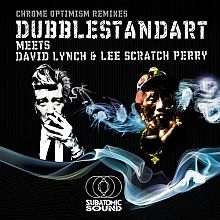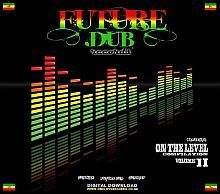
The claim: the Fibonacci sequence is an amazing number pattern, related to the Divine Proportion or Golden Mean (also known as φ). Look at pineapples, snails, human bodies, architecture, paintings or even music: the Golden Ratio and the Fibonacci numbers pop up all over the place. And when they do, the result is always appealing.

The evidence: musical arguments
If you don't know what the Golden Ratio is, please refer to your credit card. The relation between the length and width of this card is known as the Divine Proportion or Golden Mean or φ. It's relatively easy to spot the Golden Ratio in architecture or in painting (although it's usually an approximation) but how about music? Ratio's are not musical instruments and numbers don't produce sound. They're just symbols we use, to calculate whatever it is we want to calculate. So how can we connec or 'map' numbers to musical stuff, like pitch, timbre, loudness or timing? Tough question. Let's do some field research, to see what solutions composers have come up with.
There are a few 20th century classical composers who have actually admitted the conscious use of Fibonacci numbers in their works. Iannis Xenakis used Fibonacci numbers in his Anastenaria, Le sacrifice (1953). Luigi Nono used successive note-lengths derived from the Fibonacci sequence in Il canto sospeso (1956). György Ligeti used φ in determining the lengths of the respective sections in Apparitions (1958-59) and Karlheinz Stockhausen used the Fibonacci numbers in many of his works, for the “duration of different sections as well as for the density of sound-masses”. It is often claimed that Bela Bartok also used the Fibonacci sequence in his Music for Strings, Percussion and Celesta but critics say this is not true.
Φ enthousiasts usually count measures when searching for Golden Ratios. They typically search through old, beautiful and appealing classical music. They'll claim that composers like Chopin, Mozart, Beethoven and Wagner strategically place the climaxes and important changes of a piece at measure 34, 55 or 89, which are all Fibonacci numbers. Keep in mind though that there are only a few 'small' Fibonacci numbers like 3, 5 and 8, and many more big ones and really big ones like 2178309 and 53316291173. This presents a problem: really big numbers are hard to find in music. The smallest numbers are easy, but not very convincing if you want to prove the conscious use of Fibonacci numbers. That leaves values like 34, 55 or 89, which should 'produce the best results' if you try to spot them in an amount of measures, because there are no obvious relations between numbers like 34, 55, 89 etc. and a certain pitch or timbre or loudness level.
The 'Amen Break' was identified by Michael S. Schneider as an example of φ in music, especially in rhythm. It's the kind of thing that most holistic minded people would love to believe. The word Amen subtly hints at the Divine Proportion. And that nicely photoshopped story Mr. Schneider comes up with looks great. But upon closer inspection, there's no relation whatsoever between the Amen Break and φ. Not even a rough approximation, as is usually the case (even with the overhyped Nautilus Shell).
The evidence: numerological arguments
From a mathematical point of view, the Fibonacci sequence and φ are remarkable. In the world of numbers, there are all kinds of funny and unexpected things going on which are related to φ. For example, φ is the most irrational of all irrational numbers. This means that on a deep mathematical level, it is a limit case, which will often show up in 'optimized' situations. And the Fibonacci sequence is certainly one of the most fascinating sets of numbers.

One of the important mathematical qualities is the recursiveness (self-similarity) of the sequence. In fact, the Fibonacci sequence is the oldest known recursive sequence. Outside pure mathematics, in the real world, it's easy to see how a sequence or a concept that has an 'infinite' property can become a metaphor for something big and cosmic, like God's favorite ratio or something. But recursiveness alone doesn't make φ special. There's more to it's metaphoric appeal. The second ingredient of the 'Golden' φ-metaphor is the clear and intimate relation between the whole and the parts. It's like this:

If you're into esoteric holistic stuff, you'll recognize the echo of ancient Hermetic wisdom: "That which is Below corresponds to that which is Above, and that which is Above corresponds to that which is Below, to accomplish the miracle of the One Thing." (from: The Emerald Tablet of Hermes Trismegistus)
The verdict
Φ and the Fibonacci sequence are an obsessive pattern seeker's best friends. You'll find them in nature, in the visual arts and even in music. Approximately, more or less, after a bit of number massaging. But if you prefer accurate measurements and rigorous mathematics, you'll have to work a bit harder to find examples of φ and the Fibonacci sequence outside the realm of numbers.
On the other hand, the suggestive whole vs. parts relationship and the recursiveness of φ are the main ingredients of a potent and ancient metaphor: the 'divine proportion'. This metaphor gives φ a second life, outside of pure mathematics. Symbolic meanings and applications of φ have intrigued and confused holistic minded people for ages. The classic mistake is to mix up math-φ and metaphor-φ.
Some musicians consciously use Fibonacci numbers or φ as composing tools. There seems to be a tendency to use φ for structuring time and rhythm. This doesn't guarantee 'golden' music.
Exercizes
1. Get a reproduction of any painting by Leonardo da Vinci and cover it with golden spirals and rectangles, or better yet: golden triangles and pentagrams. Try not to cut off ears, poke out eyes etc. Do the same thing with paintings by Klimt, Picasso (cubist period), Rothko (color field period) and Warhol (any period). Now ask a mathematician which painting is
- the most 'beautiful' one
- the most expensive one
- aesthetically correct
2. The golden rectangle can be subdivided into subrectangles (each similar to the original) forming a kind of spiral of smaller and smaller similar rectangles. This property, part of the magic of the 'divine proportion', happens to be shared by other rectangles. For example, if you take a √2-by-1 rectangle and cut it in two, you get two rectangles with sides in the same ratio. Try it.
3. Φ = - [sin (666°) + cos (6⋅6⋅6°)]. If you're a mathematician, prove it. If you're a superstitious holistic minded person, forget it (mwoohahaha...)
4. Check out these vi-vids for a nuanced explanation of Fibonacci 'sightings' in the realm of plants, pineapples and pinecones.


